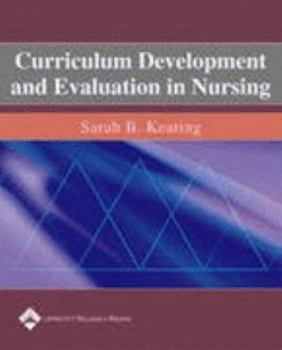Curriculum Development and Evaluation in Nursing
Select Format
Select Condition 
Book Overview
Praise for Earlier Edition: "This is a detailed yet practical guide to planning, developing, and evaluating nursing curricula and educational programs. It provides a comprehensive and critical... This description may be from another edition of this product.
Format:Paperback
Language:English
ISBN:0781747708
ISBN13:9780781747707
Release Date:January 2006
Publisher:Lippincott Raven
Length:448 Pages
Weight:1.50 lbs.
Dimensions:0.8" x 7.4" x 9.1"
Customer Reviews
4 ratings
Keating knows her stuff
Published by Thriftbooks.com User , 15 years ago
Dr. Keating is extremely knowledgeable and experienced in the area of curricula development and review. This book is a great resource for new nursing educators or those preparing for curriculum revision or new development.
Curriculum Development and Evaluation in Nursing
Published by Thriftbooks.com User , 16 years ago
I can not write a complete review as this is a text for a class and I have not completed the book as of yet. I can say it is easier to digest than several other texts I have read on the subject.
Required text
Published by Thriftbooks.com User , 16 years ago
This is one of several required texts for a graduate level nursing course in Curriculum Development I am taking at James Madison University. It is one of the best in the field of nursing education and one of the most readable. It is thorough without being too wordy, and is strongly evidence-based. I recommend it for future nurse educators even if you don't have to buy it for a course.
Curriculum Development and Evaluation in Nursing
Published by Thriftbooks.com User , 19 years ago
Curriculum Development and Evaluation in Nursing by Sarah B. Keating (ed.) (2006) has seven sections and 15 chapters as a practical guide for developing curricula at the ADN, BSN, entry level masters, specialty and advanced practice masters, and doctoral programs. Section one is introduction to the history of curriculum development and faculty role. Section two is about learning theories, education taxonomies, and critical thinking. Section three presents the external and internal frame factors for conducting a needs assessment for reviewing and developing curricula. Section four, curriculum development, addresses undergraduate and graduate components of the curriculum. Section five, curriculum and program evaluation, covers master planning for program and curriculum evaluation, application of educational evaluation models, and planning for accreditation. Section six adapts curriculum development and evaluation to staff development and client-centered health education. Section seven reveals issues and trends in curriculum development and evaluation. The chapters are written by 12 contributing authors. Keating writes "A curriculum is the formal plan of study that provides the philosophical underpinning, goals, and guidelines for the delivery of a specific educational program." Faculty is responsible and need a view of the curriculum as a whole. History is a strength of the book. Authors address the transformative and constructivist learning theories, the use of technology to deliver the curriculum, distance education and the measurement of program outcomes as part of total quality management. Both formal and informal curricula are diagramed. Chapters have a summary, discussion questions, learning activities, faculty learning activities and references. Figures, tables, case studies, and examples of documents facilitate understanding. This introduction to curriculum development and evaluation is intended for graduate students preparing for the faculty role, new teachers, preceptors and mentors for students, and nurse educators in practice settings.





